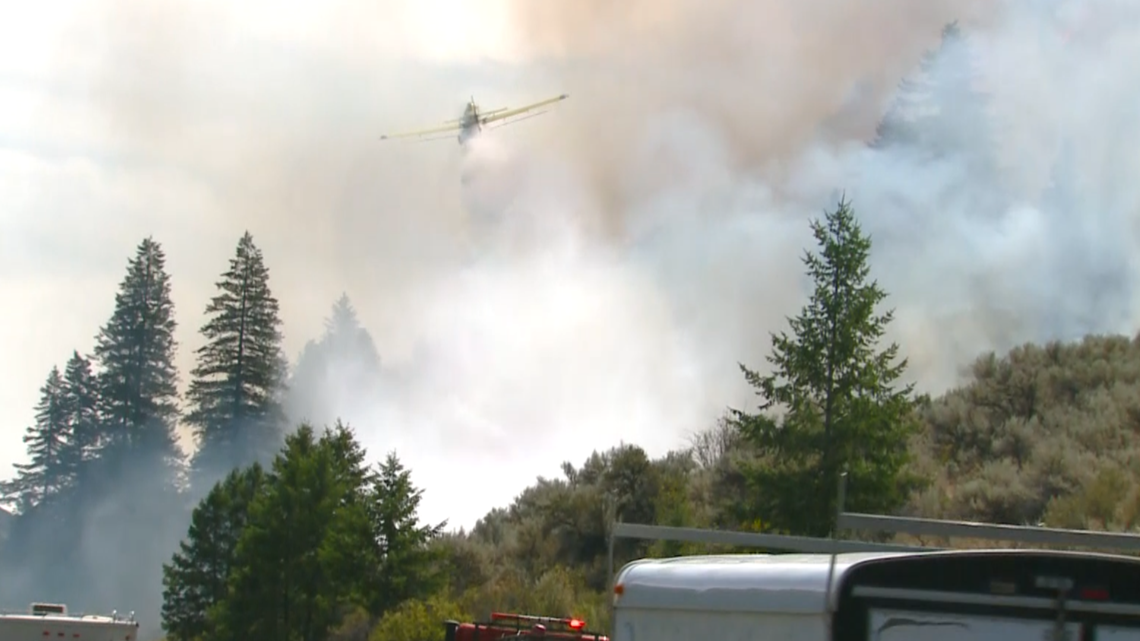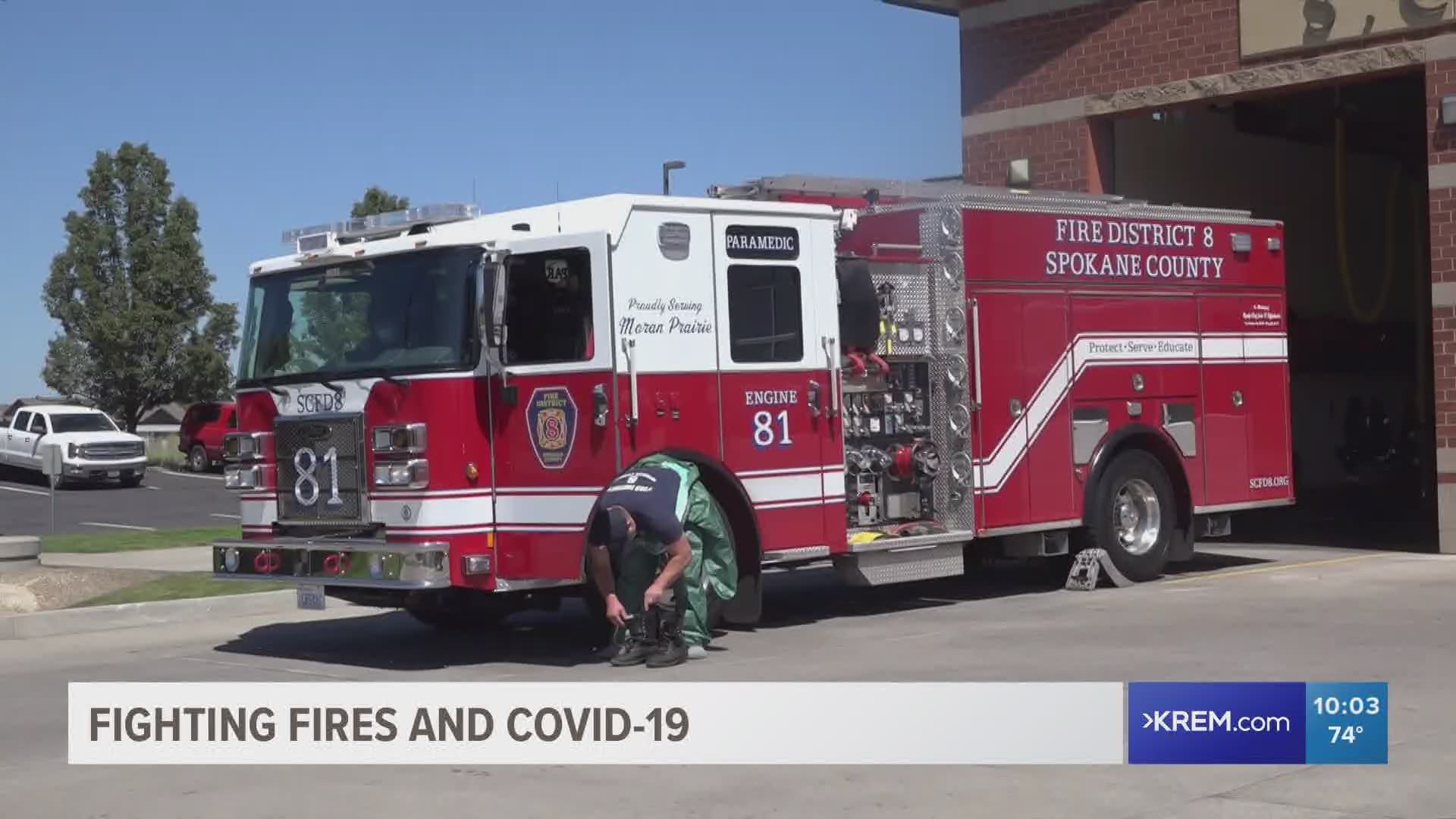SPOKANE COUNTY, Wash. — It is fire season in the Northwest region, and the pandemic is only making firefighters jobs harder, according to fire experts.
Firefighting is already a dangerous job, and with the pandemic there's some added pressure.
"Every patient that we encounter is a suspected COVID patient now," said Spokane Fire Chief Brian Schaeffer. "We're having to adapt our practice to that new reality."
His teams are trying to follow every Washington State mask mandate guideline, but some of them are impossible, he said. They could also be harmful.
"On the fireline, we won't be wearing our masks," he added. Simply the amount of sweat and smoke that's in it really does limit our ability to work."


When they aren't on the fireline, it is a different story.
"They're mentally prepared for wearing a mask during their entire shift, which takes some preparation," he said. "It really does because you need to hydrate more especially with an oncoming season, they get to work"
Not only are most mass flammable, but it could hurt their breathing pattern by blocking clean air.
Firefighting has been dramatically affected by coronavirus, Department of Natural Resources Deputy George Geissler said.
"COVID-19 coming into play really started making us look at all of the things that we typically do," he said.
They document temperature checks multiple times during the 24 hour shift, Schaeffer said. When they're off work, they make sure to protect the people that they work with by limiting their exposure to large groups.
The most important thing both Schaeffer and Geissler stressed was hydrating.
"What used to be a routine of constantly drinking water, [the masks] kind of limited our consciousness and to doing that all the time," Schaeffer said.
They now have to be purposeful about making sure to drink every hour and try to take in as much water as they can, he added.
When the relative humidity (RH) drops below 20%, it really makes an impact on you on the fireline very quickly. Adding in wind, forest fires can spread more easily depending on the fuel dryness, according to the National Wildfire Coordinating Group.
In scientific terms, RH is the ratio of the how much water is in the air to the amount of water the air could hold at that temperature.
Basically, RH levels should go between 20%-60%. If they go lower than 20%, fires will be more intense.
With already nine fires yesterday, this is going to be an active wildfire season, said Schaeffer. He is not too worried about the fires or the mask mandate.
"We're mission oriented and we're mission focused, we're not going to take the mass off and endanger the people we work with or the public," he said. "It's just not, it's just not in our DNA."

